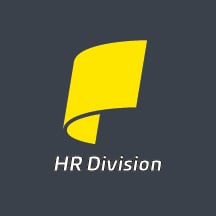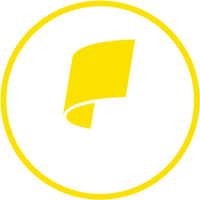Your HR team is at the front of a wide variety of complex compliance and workforce issues that could impact your business in 2021. We’re here to help with a checklist highlighting some of the most important HR tasks, related to payroll, benefits, and compliance, to address in Q1.
Payroll & Tax
1. File W-2 and Other Wage Statements. Employers electing to defer Social Security tax must file Form W-2 by Feb. 1, 2021, to avoid penalties. Form W-2 must reflect only the amount of Social Security tax withheld from 2020 wages, and a Form W-2c will need to be issued if 2020 Social Security tax is withheld in 2021.
 2. Prepare Tax filings for Nonemployee Compensation. By Feb. 1, 2021, businesses must distribute a Form 1099-NEC to individuals who received more than $600 in payments during 2020. Additional copies must be submitted to the Social Security Administration at the same time. For miscellaneous income such as rent or payments to an attorney, businesses must distribute a Form 1099-MISC to recipients by February 1, 2021 and send corresponding copies to the IRS by March 1 if filing by paper and March 31 if filing electronically.
2. Prepare Tax filings for Nonemployee Compensation. By Feb. 1, 2021, businesses must distribute a Form 1099-NEC to individuals who received more than $600 in payments during 2020. Additional copies must be submitted to the Social Security Administration at the same time. For miscellaneous income such as rent or payments to an attorney, businesses must distribute a Form 1099-MISC to recipients by February 1, 2021 and send corresponding copies to the IRS by March 1 if filing by paper and March 31 if filing electronically.
3. Prepare FICA and FUTA forms. IRS (FICA) Form 941 for Q4 and federal unemployment tax (FUTA) Form 940 are due Feb. 1, 2021. However, if you deposited all FUTA tax when due, you have until Feb. 10, 2021, to file. If you claim certain nonrefundable tax credits, review updates on Form 941 for reporting tax liabilities.
4. Prepare ACA Reporting. Under the Affordable Care Act (ACA), the responsibility for affordable healthcare coverage is on the employer and reporting requirements depend on the number of full-time equivalent employees (FTEs). Employers with 50 or more FTEs last year are considered an Applicable Large Employer (ALE) for the current year. If your company is an ALE, verify that your health plan meets all ACA requirements for coverage and affordability.
The deadline for applicable employers to distribute Form 1095-C to employees for the 2020 tax year is March 2, 2021. Forms 1094-C, employee coversheet, and 1095-C must be filed by March 1, 2021, if filing by paper, and March 31, 2021, if filing electronically. Also, check with your benefits broker for any changes in reporting, and that required annual notices are distributed to employees, such as Medicare Part D, HIPPA, and CHIPRA.
Compliance
5. Review Updated DOL Rule Clarifying Pay Rate Calculations for Piece-Rate Workers. Employers may calculate the regular rate of pay for employees paid on a piece-rate basis — for example, those paid per unit of production rather than a period — by dividing the employee's earnings by the number of hours worked in a workweek, including both productive and nonproductive hours.
6. Clarify Independent Contractor Status. Employers should keep a close watch in early 2021 on a proposed DOL rule that would impact the definition of an Independent Contractor vs. Employee. Misclassification in this area may result in significant penalties and fines.
 7. Schedule Required Compliance Training. Check all required federal, state, and industry workplace training requirements that apply to your business, as well as workplace training mandated in your state. If COVID-related training is not required in your state, consider workplace training consistent with OSHA and CDC guidelines.
7. Schedule Required Compliance Training. Check all required federal, state, and industry workplace training requirements that apply to your business, as well as workplace training mandated in your state. If COVID-related training is not required in your state, consider workplace training consistent with OSHA and CDC guidelines.
8. EEO-1 Data Collection Deadline Extended. Due to the active pandemic, the Equal Employment Opportunity Commission (EEOC) announced that it would delay the collection of 2019 EEO-1 Component 1 and 2020 EEO-1 Component 1 data until March 2021. EEO-1 data requires applicable employers to submit information such as the number of employees, sorted by job category, race, ethnicity, and gender.
 9. Check OSHA Record-Keeping Requirements and Update Workplace Postings. Applicable businesses, with 10 or more employees, are required to post OSHA Form 300A, summary workplace injuries and illnesses, every year from February 1 until April 1. Note that the employee count includes employees at all business locations combined.
9. Check OSHA Record-Keeping Requirements and Update Workplace Postings. Applicable businesses, with 10 or more employees, are required to post OSHA Form 300A, summary workplace injuries and illnesses, every year from February 1 until April 1. Note that the employee count includes employees at all business locations combined.
10. Evaluate Your Paid Sick Leave and Family & Medical Leave Program. Audit your employee count to determine if you are required to comply with the Family and Medical Leave Act (FMLA) in 2021. FMLA entitles eligible employees of covered employers to take unpaid, job-protected leave for specified family, medical and military reasons. Also, stay up to date with COVID-related provisions and possible extensions under the Family First Coronavirus Response Act.
Benefits
 11. Review Your Workers’ Comp Policy. Contact your Workers’ Comp insurance broker to determine if adjustments need to be made to cover additional exposure for remote workers.
11. Review Your Workers’ Comp Policy. Contact your Workers’ Comp insurance broker to determine if adjustments need to be made to cover additional exposure for remote workers.
Also, review if any changes in your work environment or changes in staff work assignments might have an impact on your exposure and codes currently on your account.
12. Medicare Part D Disclosure. If you provide prescription drug coverage to Medicare-eligible individuals, you must also disclose to the Centers for Medicare and Medicaid Services (CMS) annually whether the coverage is creditable or non-creditable. This disclosure must be made no more than 60 days after the beginning of each plan year.
General HR
13. Monitor State Developments. State laws can vary. If your business has locations in multiple states, be sure to stay up to date on any state-specific changes which may impact your organization, such as minimum wage increases, expanded leave provisions, and posting requirements.
14. Watch for updates on COVID Legislation. Be on the lookout for new COVID relief measures and possibly an extension of 2020 programs, such as Families First Coronavirus Response Act (FFCRA), Coronavirus Aid, Relief, and Economic Security Act (CARES), and other COVID-related programs.
 15. Plan Ahead for Employee Appreciation Day. An annual holiday observed on the first Friday in March, Employee Appreciation Day recognizes employees for their commitment and hard work.
15. Plan Ahead for Employee Appreciation Day. An annual holiday observed on the first Friday in March, Employee Appreciation Day recognizes employees for their commitment and hard work.
On March 5, 2021, make plans to celebrate your most valuable asset - your employees.
Need Help?
Depending on the type of business and industry, your HR Checklist may be different and even more complex. If so, just contact us. By partnering with a certified PEO (CPEO), like Propel HR, you gain access to a team of HR experts to help you navigate the complexities of your business as well as stay compliant.
Please Note: This information is for general reference purposes only. As we continue to work during an active pandemic, laws, regulations, and filing deadlines are likely to change. Please check with the appropriate organizations or government agencies for the latest information and consult your employment attorney and/or benefits advisor regarding your responsibilities. In addition, your company may be exempt from certain requirements and/or be subject to different requirements under the laws of your state. (Updated December 16, 2020)
 Propel HR President Lee Yarborough was recently elected Chair of the National Association of Professional Employer Organizations (NAPEO) Board of Directors.
Propel HR President Lee Yarborough was recently elected Chair of the National Association of Professional Employer Organizations (NAPEO) Board of Directors.
She spoke with PEO Insider magazine to share where she thinks the industry is headed and how NAPEO can continue to grow.
Download a pdf version of the full interview: A Passion To Serve
About Propel HR. Propel HR is an IRS-certified PEO that has been a leading provider of human resources and payroll solutions for more than 20 years. Propel partners with small to midsized businesses to manage payroll, employee benefits, compliance and risks, and other HR functions in a way that maximizes efficiency and reduces costs.










